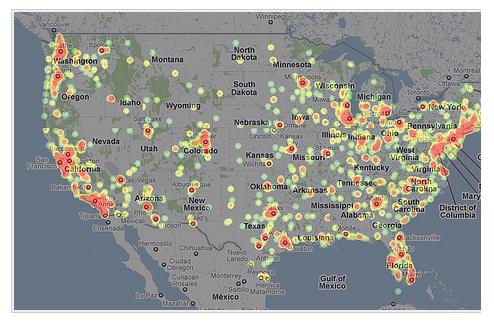I love speaking to groups so yesterday was a great day for me. The setting was an internal planning meeting for one of our clients, the subject was creating customer loyalty, and the context was customer service. I speak in front of groups fairly often and this one turned out to be particularly fun because the people were clearly passionate about the subject and were eager to jump into the conversation. The title of my presentation was Five Assumptions that Drive Loyalty, and when I say assumptions I am talking about assumptions we need to make about the customer. They are:
- The Customer is Smart
- The Customer is Well Intentioned
- The Customer Values Their Time
- The Customer Has Friends (power)
- The Customer Will Share With Them (will use it)
These assumptions are so obvious that they really don’t need much explaining. However, they are not that easy to accomplish. Making your customers wait in line is a clear way to tell them that you think your time is more valuable than theirs – and we all hate waiting in line. Despite this, no one has figured out how to get hundreds of people onto an airplane without making them wait in line.
During the presentation I was also able to squeeze in two other of my favorite points:
- Customer / vendor relationships can only be in one of two categories (buckets): “Unbelievably Great” or “There Has To Be A Better Way”. There is no middle ground. Any company that accepts the middle ground of “Good Enough” is only deceiving themselves – because their customers are absolutely in the “There Has To Be A Better Way” bucket.
- Companies must find structures for their businesses that naturally promote positive relationships. Blockbuster’s late fees cause everyone to look for an alternate solution. It is not that Blockbuster is unjustified in charging the late fees, because clearly they have to get their movies back. It is that the late fees drive the customers away. Netflix found a way to build a movie rental business without late fees – and their customers are very loyal as a result. I suppose their amazing execution also helps.
In the discussion a number of very interesting ideas surfaced. This of course is the most fun part about getting 150 smart and energetic people into a room – ideas just appear and there is a pretty good chance that no one might have come up such great thoughts sitting alone in a room. Here are the three ideas I like the most in our conversation:
- Customers are loyal to companies that manage their information well. In its simplest form this means not making the customer give basic information over and over, but rapidly accelerates to using customer history to improve the experience. Log on to Amazon.com and you can easily see your entire purchase history, and Amazon.com is also using that data to make recommendations to you about what you might like to purchase next.
- Customers are loyal to companies that trust them. If you lose one of Netflix’s DVDs, just tell them, and it is no big deal. I bet many customers find the lost DVDs later and actually return them – even though they do not have to.
- Customers will pay. Customers are exhausted by poor quality free things and are ready, willing, and able to pay for quality.
We ended the hour talking about the companies that do a great job creating loyalty in their customers. The list included: Zappos.com, Netflix, Apple, Amazon.com, and Starbucks. Don’t be shy about adding to the list.
